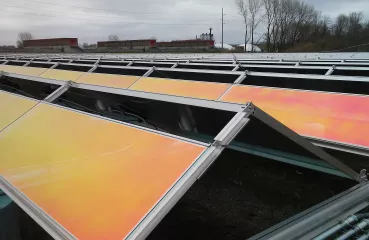Cameran: Landfills are attractive for solar development because of three major factors.
- First, they’re large and maintained to not grow trees, which means they get lots of sunlight.
- Second, solar development is one of very few types of revenue-producing development that can take place on landfills without increasing the potential for landfill waste contamination.
- Lastly, landfills typically only exist because there is enough industry and people nearby to produce enough waste to need a landfill in the first place. This is important because where there are people, there is electricity consumption, which means there is supporting electrical infrastructure or load demand nearby to use the electricity produced by the solar array at the closed landfill.
Last year the Minnesota Legislature allocated funds to the Environmental Quality Board to conduct a study on the potential for closed landfills to host solar arrays. Why is a study needed and what is its scope?
Cameran: The 110+ sites in the closed landfill program are non-homogenous in their context, make-up, engineering, and management. A study is need to perform broad, holistic, and data-driven analysis of all the closed landfill sites so that the state can facilitate revenue-generating solar development at these closed landfill sites, while also maintaining the integrity of the original purpose of the landfills: to contain and manage toxic and harmful waste. The scope of this study boils down to three main directives:
- Identify and assess properties in the closed landfill program with the highest potential for solar energy production;
- Identify potential barriers to solar energy production, and potential ways to address those barriers; and
- Identify policy recommendations that would facilitate solar energy production on closed landfill program sites in a manner that would contribute to state and local government sustainability goals.
Are there examples of closed landfills in MN that already have solar?
Cameran: There are! Minnesota has one, large-scale, 400-kW, solar development at a closed dump site in the City of Hutchinson, MN. Smaller solar developments have been built at the Washington County Landfill (10kW) and the Lindenfelser Landfill (10kW).





